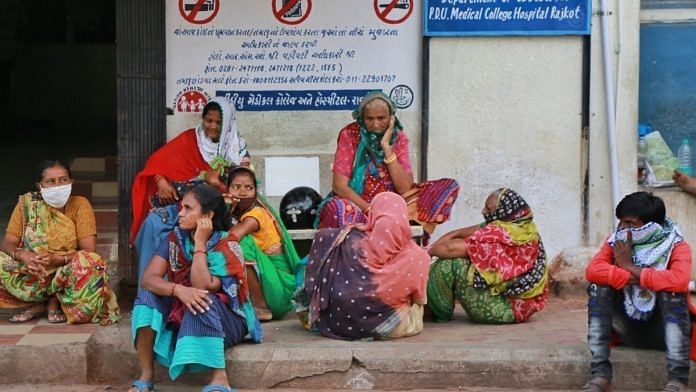Women have been left out of not only Covid-19-related news coverage in countries like the UK, US, India, Kenya, Nigeria and South Africa, but also most pandemic-related decision-making bodies, which compounds the absence of their perspectives from the news. This is a finding of a report, commissioned by the Bill & Melinda Gates Foundation.
The burden of Covid-19/coronavirus on women
Political challenges: In five of the six analysed countries, women have been largely locked out of Covid-19/coronavirus-related decision-making at a national level. Globally, men were found to be overwhelmingly in charge of the response to Covid-19 and of policy making in relation to it. Women, therefore, although more likely to be frontline health workers, were much less likely to have the agency to act strategically on matters related to Covid-19.
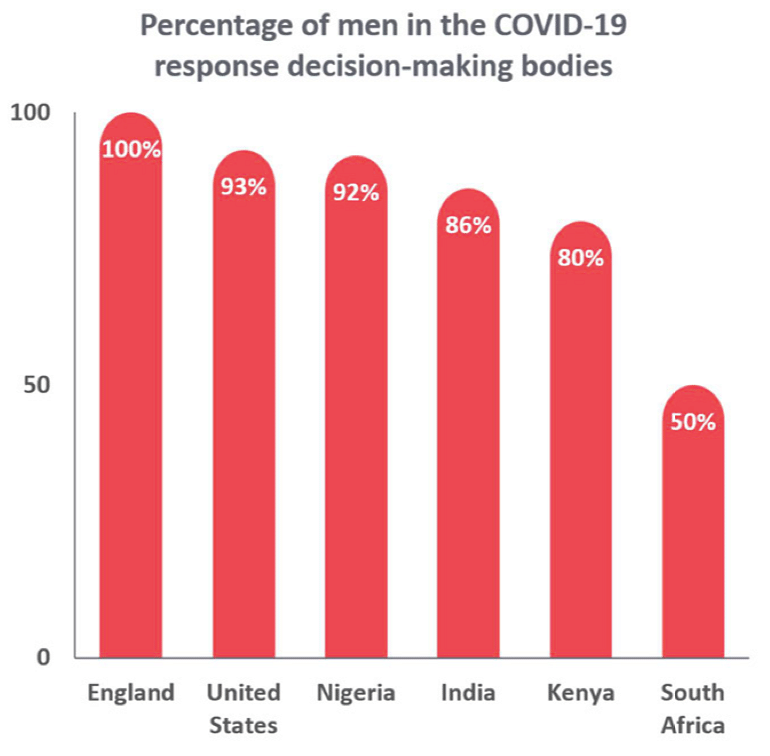
Educational constraints: Women are marginally less likely to be aware of Covid-19, possibly due to their lower literacy/education levels in the global south. However, they claim to be better at recognising the symptoms, their primary care-giving roles possibly giving them confidence in this regard.
Health-related challenges: Data from 92 countries suggests that while men are more likely to die of Covid-19 in the six analysed countries, in some countries it is women who are more likely to contract the disease. Reports also suggest that in some socially conservative countries in Africa and Asia, women may be left out of testing, leading to a substantial under-reporting of Covid-19 cases among women. 69% of health professionals globally are women, therefore they are more exposed to the virus. Women’s reproductive and sexual health are at heightened risk due to key services being scaled back and resources previously used to support women’s reproductive and sexual health being redirected to the containment of Covid-19.
Gender split across frontline industries
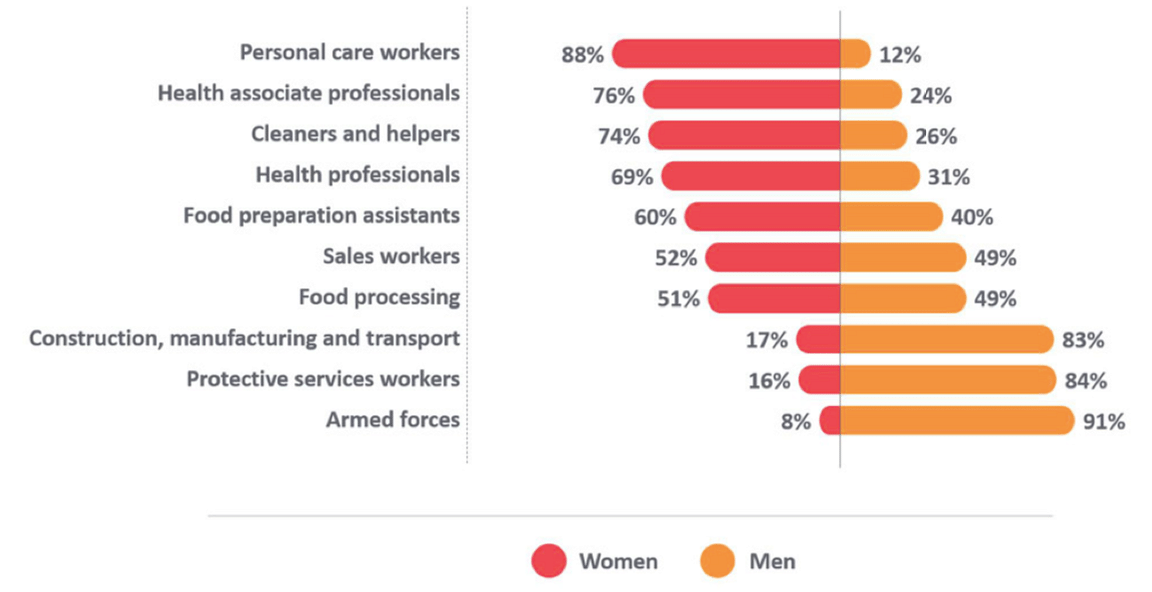
Socio-economic and psychological challenges: Women face unique socio-economic pressures resulting from patriarchal social norms — for example as victims of growing gender-based violence, as primary care-givers, as spouses of deceased men in control of family finances and property; as homemakers with informal jobs, as part-time employees with less secure jobs, as lower income earners, and as parents more likely to live in single-parent households with higher numbers of dependents. Women are more likely than men to feel worried, but they are also very resilient. They are more likely to see unity whereas men see division and to find meaning in the hardship of the Covid-19 story.
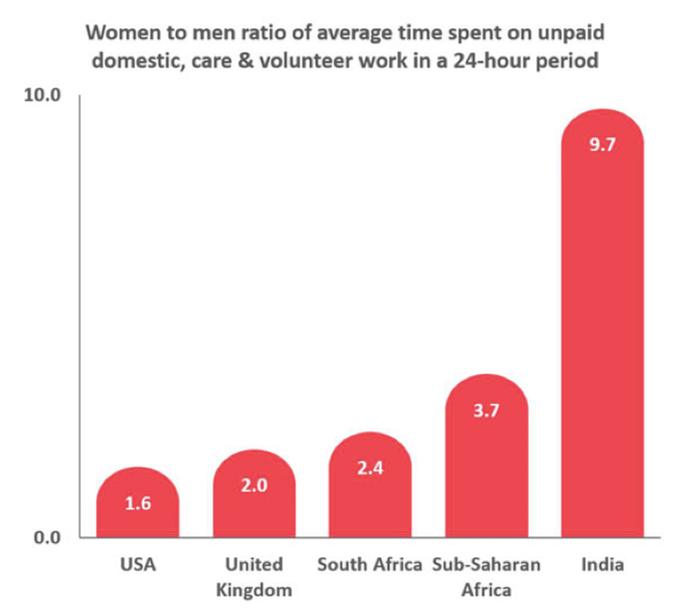
Also read: Work-from-home has started a new battle. And women are losing this too
Heavier news consumers
Women have become heavier news consumers during the pandemic while enduring higher than usual levels of anxiety and worry. TV and social media are the biggest platforms for the consumption of Covid-related news by women.
The increased news consumption of women during the pandemic may be attributable to the following factors:
- 1. Women are reporting a higher need for safety and security than men.
- 2. Women experience heightened levels of stress and concern in relation to the global pandemic in comparison to men.
- 3. Women show lower levels of satisfaction with the situation in their country than men.
Despite the unique socio-cultural, economic, political, health-related and educational challenges that women face, their perspectives are universally and significantly outweighed by the perspectives of men featuring in the news about Covid-19.
Also read: These are the unsung women helping rural India fight Covid: Rural ministry secretary
The missing women experts
Women’s expert voices in Covid-19/coronavirus stories are worryingly marginalised (even more so than in non-Covid news stories): Content analysis of 2,100 sampled quotes from 80 publications across six countries showed that men were quoted nearly three times more frequently in the news about Covid-19 than women in the UK, nearly four times more frequently in Kenya, more than four times more frequently in the US, nearly five times more frequently in South Africa and Nigeria and five times more frequently in India. A likely reason behind the marginalisation of women’s share of voice in Covid-related news stories may lie in the story sourcing choices that journalists make. Typically, in times of crisis, “status quo bias” tends to cause journalists to revert to ”established sources” who are significantly more likely to be men.
The portrayal of women’s voices in the news is skewed towards men’s perspectives: Women were four times less likely to feature as experts and commentators (77% men vs. 19% men) in the 175 most highly ranked Covid-19 and coronavirus stories from the top five providers in each of the six countries, identified using Google’s news search engine.
Women’s share of quoted voice out of all voices in Covid and non-Covid stories
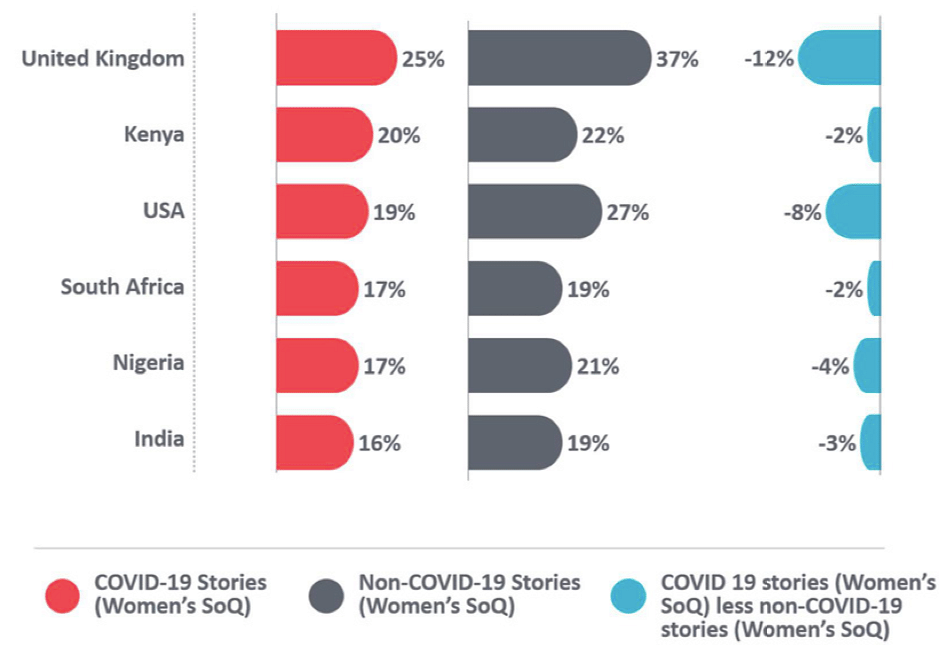
Covid-19/coronavirus news stories overwhelmingly amplify men’s expertise and dial down women’s: Women are more likely to be used as sources sharing subjective views than experts sharing authoritative expertise. Women constituted only 19% of all experts (vs. 77% men) but 53% of sources (vs. 35% men).
The function and gender of people in the news
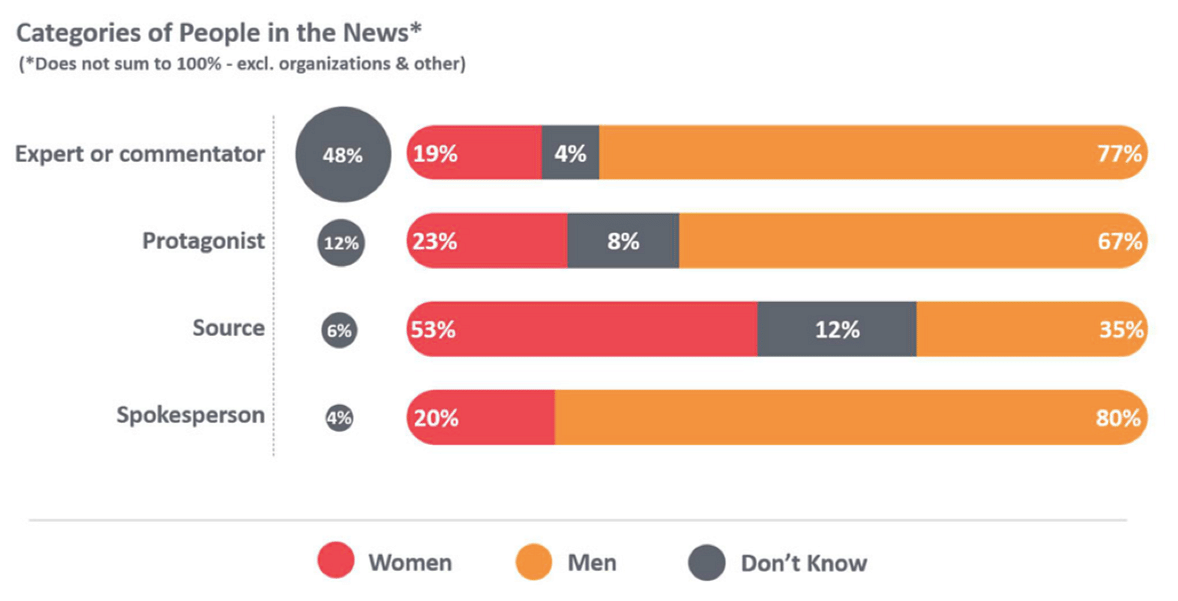
While just under a quarter (23%) of all people quoted in these articles were politicians, only 13% of these were women (vs. 82% men), which partly reflects women’s disproportionate marginalisation in Covid-related political decision-making and partly the extent to which they are overlooked as experts.
Selected occupations of people in the news
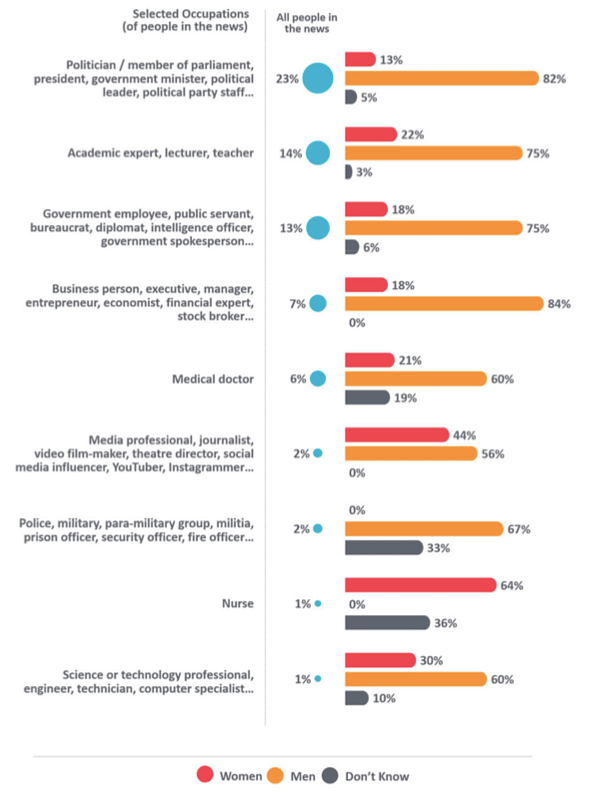
Also read: Covid pushed women back decades. India can’t be ‘atmanirbhar’ without bailing them out
The invisible women protagonists
Women have been crowded out as protagonists (even more so than in non-Covid news coverage): The computational content analysis of 44,164 sampled stories across the six countries showed that women were nearly five times less likely to feature as protagonists in news coverage headlines than men in the US, nearly four times less likely to do so in South Africa and Nigeria, three times less likely in India and Kenya and nearly three times less likely in the UK.
% women in headlines (protagonists) in Covid-19 vs. non-Covid-19 stories
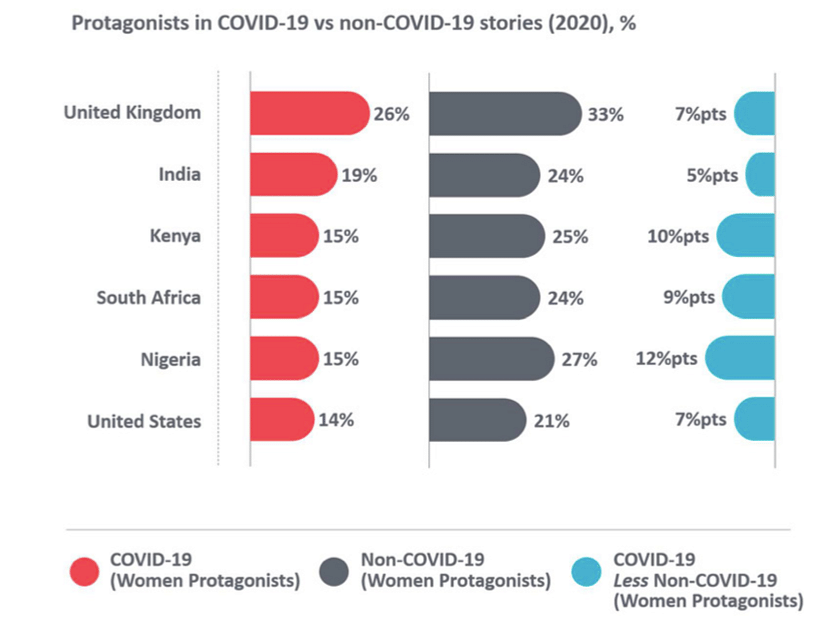
Ten most mentioned protagonists: We found that the ten most mentioned men were mentioned significantly more frequently than the ten most mentioned women. This was particularly pronounced in the US where every woman’s voice was drowned out by 11 men’s voices and the most mentioned man, the US President alone accounted for 37% of all mentioned protagonists. This heavy featuring of the US President as a story protagonist partly explains why women protagonists in the US news coverage of Covid-19/ coronavirus fared worse in percentage terms compared to other countries.
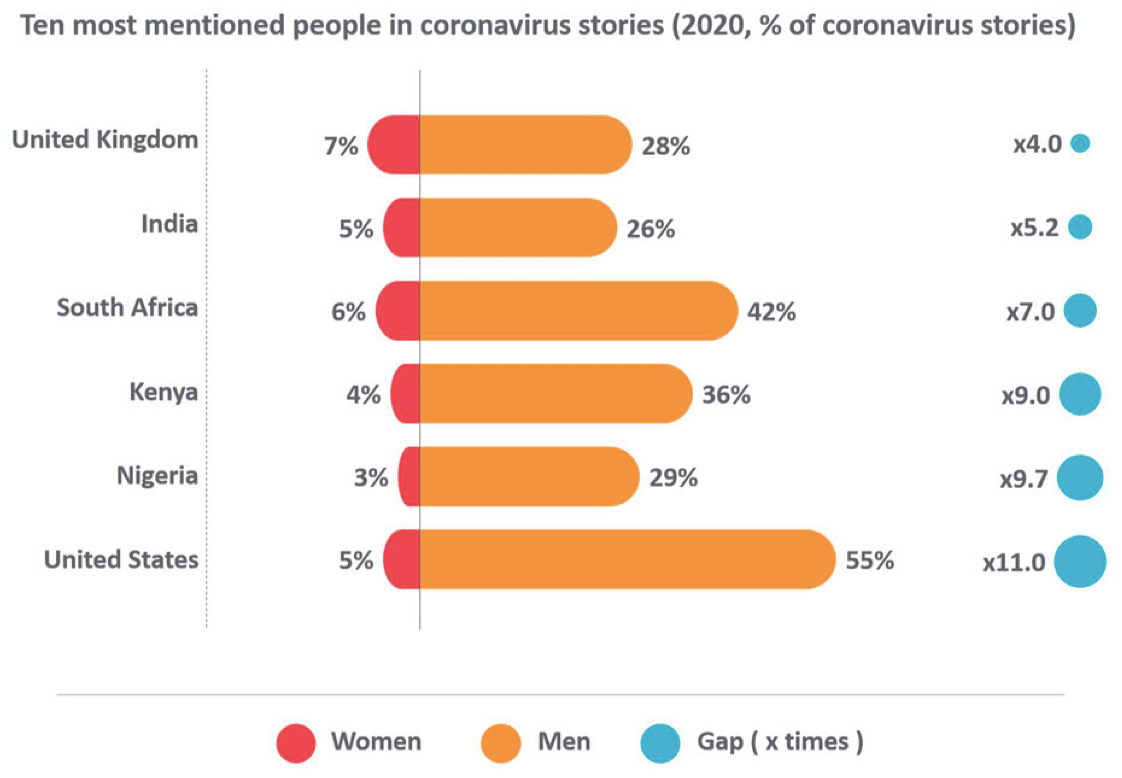
Politicians, who are significantly more likely to be men in all of the analysed countries, are leading the coverage of Covid-19. This has resulted in the coverage of women protagonists in Covid-19/coronavirus stories being squeezed out. Even when women politicians were the focus of an article, there was no guarantee that their portrayal was fair or advanced the gender equality agenda. More generally, the phenomenon of more attention being given to the appearance of leaders who are women compared to men, has been highlighted by news providers.
The Covid-19 news coverage of the five most consumed news providers in each of the analysed countries is also skewed towards men, although less severely than that of less consumed news providers. India and Nigeria fared worst with 28% and 23% of all pronouns featuring in Covid-related news headlines being feminine.
The coverage of people is too sparse in Covid-19 news: The coverage of people is much more sporadic than the coverage of facts in Covid-19/coronavirus news. Only 25% of the 175 most highly ranked Covid-19 and coronavirus stories across the six countries, identified via Google’s news search, centered around people; 74% of the stories were centered around hard facts and only 9% contained an element of a human interest story, which is more likely to draw women in. Moreover, 10% of all stories centered around women while 21% centered around men across the six countries.
Under one in four protagonists (23%) in the 175 stories analysed were women. Furthermore, of the protagonists portrayed as empowered, only 17% were women while 83% were men.
Also read: Just 15% women in committee on surrogacy isn’t an anomaly. The problem is our Parliament
Absent gender equality coverage
The gender equality dimension was all but absent, with more than 99% of the coverage missing this dimension entirely in all analysed countries. The gender equality dimension has sunk further below journalists’ radar during the Covid-19 pandemic compared to the news coverage in the same period in 2019.
Gender equality coverage as proportion of overall stories (YoY analysis)
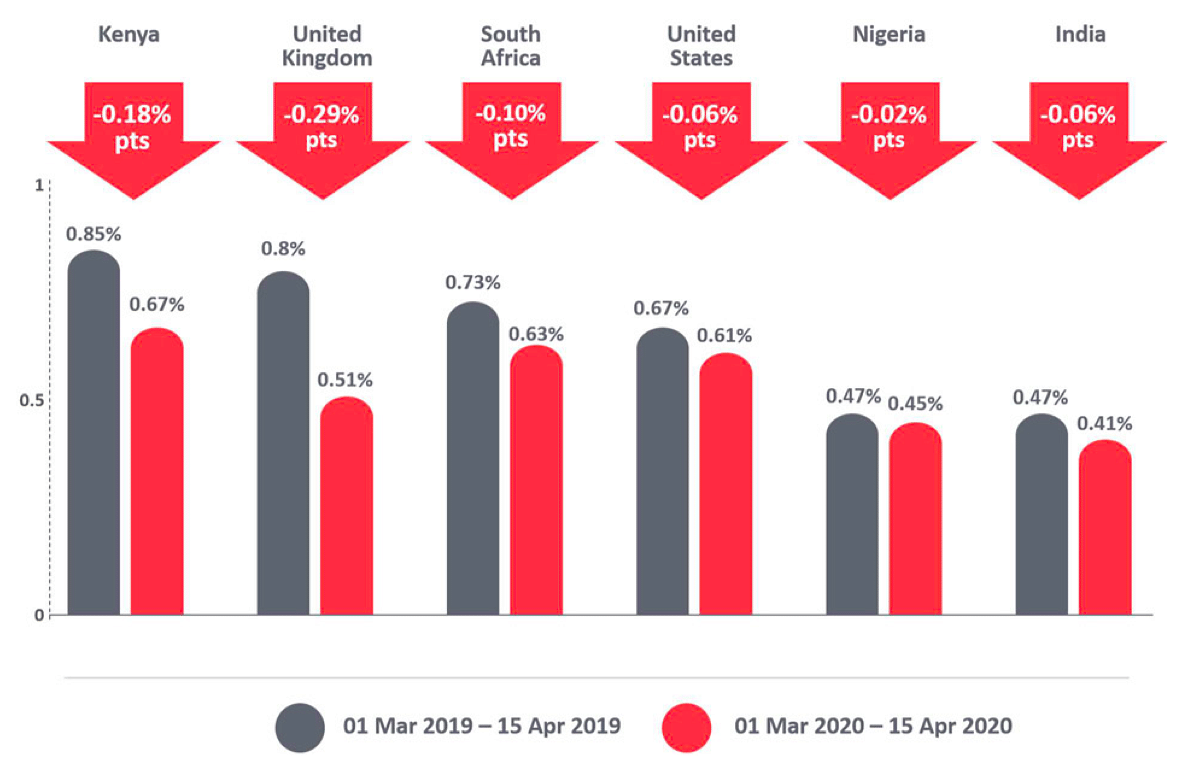
Men feature more prominently: Unfortunately, even in the minimal gender equality coverage that does exist, men feature more prominently than women in all countries bar South Africa, where 56% of the 25 most frequently featured people were women. On average across the six countries, women made up only approximately one-third (35%) of the 25 most frequently mentioned people in gender equality stories.
Gender profile of the 25 most mentioned people in gender equality coverage
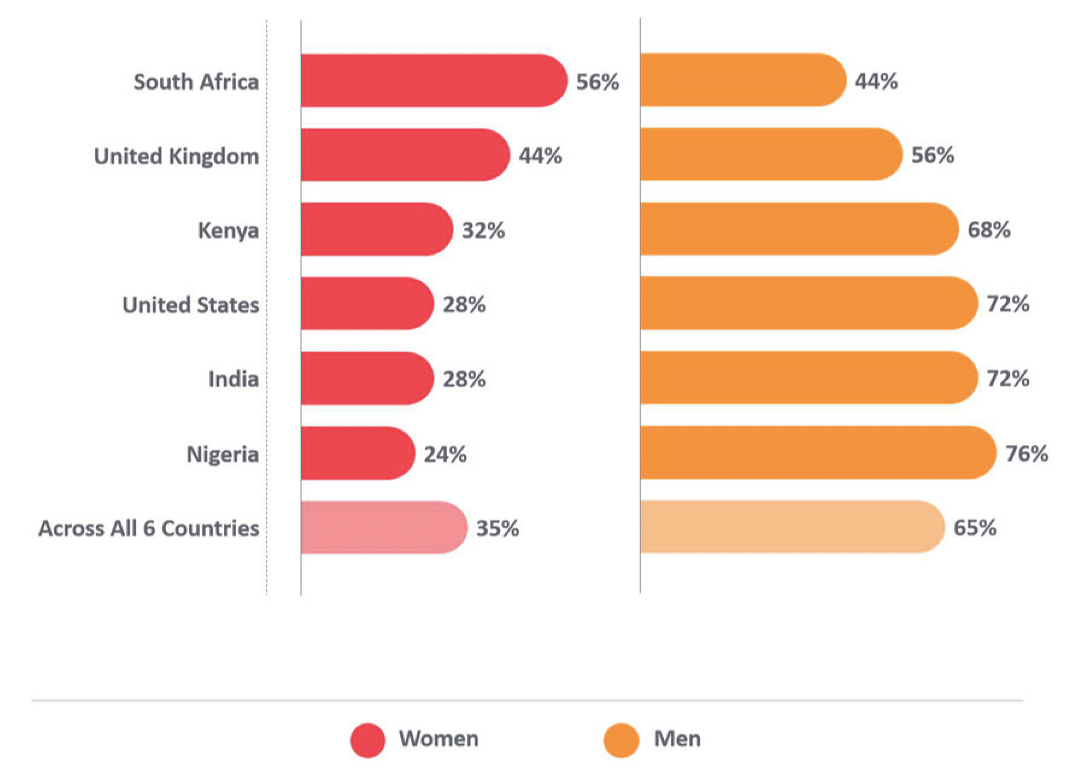
Images reinforced gender stereotypes: The European Regional Global Media Monitoring Project (GMMP) report assessed whether the stories including images reinforced or challenged gender stereotypes. In a few relevant story areas (medicine, health, hygiene, safety, disability, medical research, funding (apart from HIV-AIDS), HIV and AIDS (incidence, policy, treatment, people affected) & other epidemics, viruses, contagions, Influenza, BSE, SARS) it found that between only 2% and 7% of the stories challenged gender stereotypes, 52% of the stories reinforced stereotypes and the remainder neither reinforced nor challenged stereotypes147.
Also read: Women losing jobs due to Covid crisis could cost the world $1 trillion
Dominant and emerging frames
The framing of the pandemic in the news has been shown by academics to be critical because it influences policy decision-making with respect to the Covid-19 response. The dominant frames in the news focus on the Covid-19/coronavirus problem or its causes and are obscuring women’s unique challenges. The most commonly used frames are the health severity, economic consequences, medical/scientific, globalisation, attribution of responsibility, and public action frames. Within these, there is little space for women’s specific needs or for gender equality issues.
The frames that are more likely to support policy making, which is responsive to women’s needs and are more focused on solutions, are less dominant in the news — the human interest frame, the cooperation/solidarity frame, and the structural inequalities frame. All three remain niche.
Also read: Women use emojis the most, but world’s fastest-growing language was all male until recently
Amplifying women’s voices: recommendations
News angles that are important to women: Cover the topics within the Covid-19 story that women are most worried about such as unemployment/jobs, healthcare and poverty, as well as crime/gender violence (especially in the global south).
Women were noticeably more worried than men about the three biggest worries in all four countries. Women in the US were slightly more worried than men about coronavirus (71% vs. 67%) but much more worried about unemployment/jobs than men (30% vs. 18%)
The three topics audiences find the most worrying in their country, April 2020
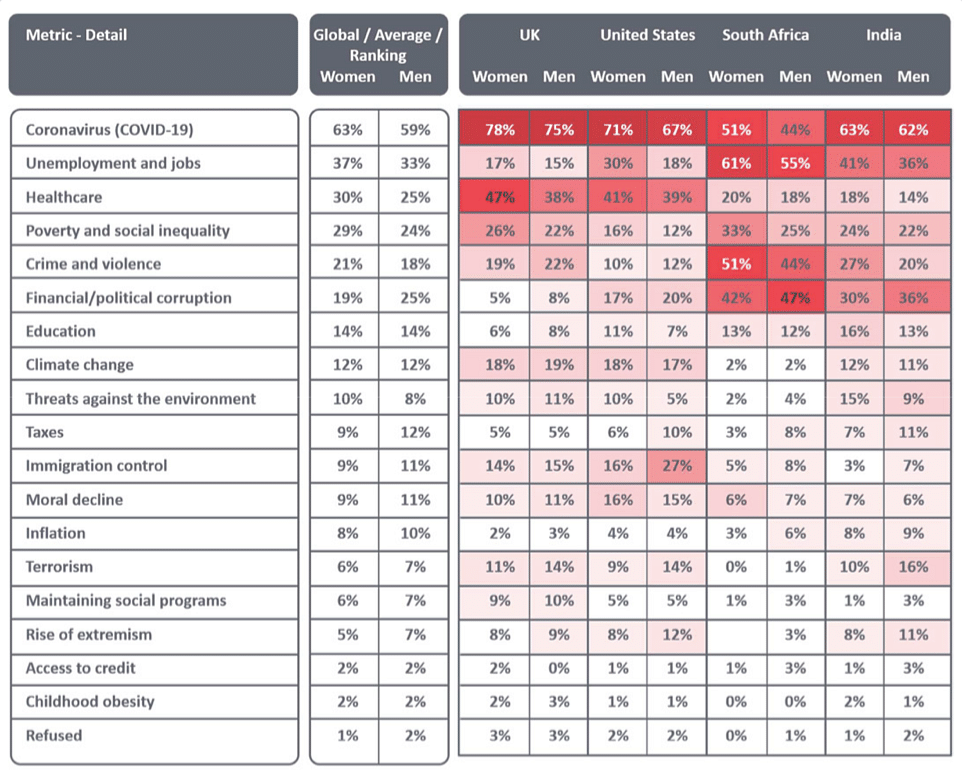
Cover the local dimensions of the story to engage women further. Offer micro-angles anchored in human interest stories emphasising the humanity in this crisis.
Give voice to women protagonists and experts that most people in different countries trust: doctors, scientists, nurses, schoolteachers and paramedics.
Luba Kassova is a director and co-founder of AKAS, an international audience strategy consultancy. Views are personal.
This article is an edited excerpt from the author’s report, The Missing Perspectives of Women in COVID-19 News, first published by the International Women’s Media Foundation. Read the full report here.


